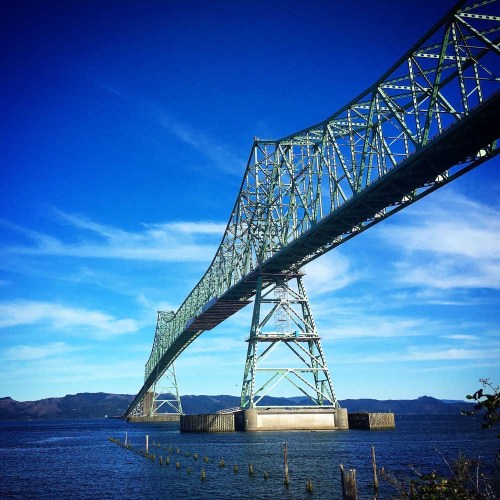State to take steps to reduce the risk of suicides at Astoria Bridge
Published 6:00 pm Wednesday, August 31, 2022

- The Oregon Department of Transportation in August 2022 reported it plans to take steps to prevent more suicides at the Astoria Bridge, including installing signs with the 988 Suicide & Crisis Lifeline, the new national suicide-prevention number.
ASTORIA — After a series of tragedies and close calls, the Oregon Department of Transportation plans to take steps to reduce the risk of suicides at the Astoria Bridge.
The state does not keep an official count, but several people have leaped off the bridge in recent years.
Trending
In January, a 29-year-old Astoria man died after jumping off the bridge and landing on the grass east of Suomi Hall.
Another man with a history of mental health issues scaled the bridge twice this year.
One night in late July, a Kia was found abandoned on the bridge, blocking the northbound lane. The owner is listed as a missing person, Oregon State Police said.
“The Megler Bridge is a draw for suicide or suicide attempts,” Monica Steele, the assistant Clatsop County manager, said in August at a Public Safety Coordinating Council meeting.
County leaders recently met virtually with state transportation staff to discuss a range of options.
In the near future, the department will post bridge signs with the 988 Suicide & Crisis Lifeline, the new national suicide-prevention number, according to Mark Buffington, the department’s district manager on the North Coast.
Trending
The department also might enlarge a deck-level gate, currently topped with barbed wire, that allows access to the top of the span. People have managed to bypass it and ascend the steps to the bridge’s highest point.
Other bridges, such as the Golden Gate Bridge in San Francisco, have had netting installed to help catch people who jump. At the Astoria Bridge, the cormorant population could pose problems.
“I’m afraid that if we put netting down, we create a platform for nesting,” Buffington said. “But it is in discussion.”
Fencing may be another option, though a retrofit would be years away.
“There’s currently no funding for that type of change,” Buffington said, adding, “It would be a major construction project.”
The Astoria Bridge, completed in 1966, was designed to bear a certain weight and withstand winds of a certain speed. To add fencing to the superstructure would require the department to study the feasibility and engineering.
Steele told the Public Safety Coordinating Council that the county would work with its lobbying firm to find potential funding for a study.
Another idea from the meeting is to post signs telling drivers to call 911 if they see someone walking on the bridge, an action considered trespassing. Current signs caution pedestrians not to walk on the span and offer suicide counseling.
The Department of Transportation can be reluctant to put up nonstandard signs. The department tries to adhere to the Manual on Uniform Traffic Control Devices, Buffington said.
The death of Carrie Barnhart, a 54-year-old woman who jumped off the Astoria Bridge in 2015, led to an examination of the gaps in the county’s mental health safety net. Barnhart had a history of schizophrenia and depression and had been pulled from the bridge by police a week before her suicide. Her family settled a wrongful death claim against Clatsop Behavioral Healthcare, the county’s mental health and substance abuse treatment provider, over her treatment.
Sheriff Matt Phillips told the Public Safety Coordinating Council that what is needed is “more capable guardians,” people who feel empowered to look after their fellow citizens and call emergency responders when they see someone on the bridge.
“We got citizens all over the place,” the sheriff said. “Here’s an opportunity to use them.”









